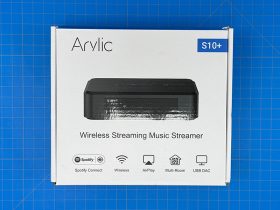
If you are a regular reader of HomeKit Authority, you will have heard of HomeKit. But Thread is not a word you would have heard much about. but, that is all about to change now Apple has built Thread into the new HomePod mini and support being rolled out by manufacturers like Eve and Nanoleaf.
Let me clear on something, Thread is not something that Apple has developed. Thread has been around since around 2016 with Apple joining the working group in 2018. But the biggest change for Thread is that Apple has included the wireless standard in the HomePod mini.
Thread provides many many benefits over existing connectivity options like Bluetooth, Wi-Fi and even Zigbee. So continue watching this video to find out more about what thread is all about and how this will affect HomeKit positively.
What is Thread?
Thread is based on the universally deployed Internet Protocol version 6 (IPv6) standard, but unlike other standards like Zigbee. Thread-enabled devices create a mesh network that connects all the different devices together. Thread network does not rely on a central hub as all the devices connect to each other to create the mesh network.
A Thread network can self-heal, so if one accessory in your Thread network becomes unavailable, the data packets will select an alternate route automatically and continue to work. A Thread network expands pretty much automatically as you add more accessories. As an example, if your Eve Aqua is beyond the reach of your HomePod mini, an Eve Energy somewhere in the middle could connect the Eve Aqua to the Thread network.
While Wi-Fi and Bluetooth networks may become unreliable with many accessories connected. Which you may have experienced when you have scaled up your Wi-Fi enabled smart devices or you have many people connected to your network. However, a Thread network will scale up easily and actually become more robust with every new accessory.
Another benefit is that Thread has extremely low power consumption. Which will be great for battery-powered devices such as motion sensors, door sensors and smart locks. So we should hopefully see more battery-powered devices benefit from Thread in the future.
Compared with Bluetooth and Wi-Fi
Currently, if you want to add HomeKit enabled accessories to your setup, you have multiple choices with Bluetooth and Wi-Fi being most popular of the connectivity options.
Starting with Wi-Fi which is useful because if you are setting up a HomeKit home, you have probably already got a Wi-FI router in your home. But as most people find over time, the more devices you add, the more unstable things become. Which leads to devices going offline and getting the dreaded “No Response”
But with Thread, which can extend far beyond the range of your Wi-Fi and into low-coverage areas. Plus the more devices you add to a Thread network, the more stable and reliable it becomes.
Of course, we expect more device manufacturers to follow suit with rolling out Thread to future products. So 2021 should see more devices hitting the market with Thread support.
Thread benefits to HomeKit
Although Thread has been around since 2016, it was not until 2018 that Apple joined the party. But now Apple has thrust Thread into the spotlight by adding support via the HomePod mini, the benefits to HomeKit are endless.
Fewer hubs
Thread does not need a hub to connect devices together, which means you should need nothing else. That means no proprietary bridges or gateways, and no starter kits. This will be a tremendous benefit to HomeKit as products like Philips Hue lights need a bridge to work. But with Thread, devices like Philips Hue could add Thread to its products like they did with Bluetooth. But as already mentioned, unlike Bluetooth, Thread would provide more stability and better response times.
More HomeKit devices
One of the biggest complaints of HomeKit is the lack of device support compared to its competitors. But because Thread can work with multiple smart home platforms and is supported by Alexa and Google. This means that device makers will only need to deploy Thread and then once certified that device will be universally available.
Thread will bring stability to HomeKit
As already mentioned, Wi-Fi and Bluetooth networks normally become unreliable with many accessories connected. However, a Thread network can scale up easily and actually become more robust with every new accessory. So a HomeKit setup build on Thread devices will bring more stability and improve performance across the smart home platform.





